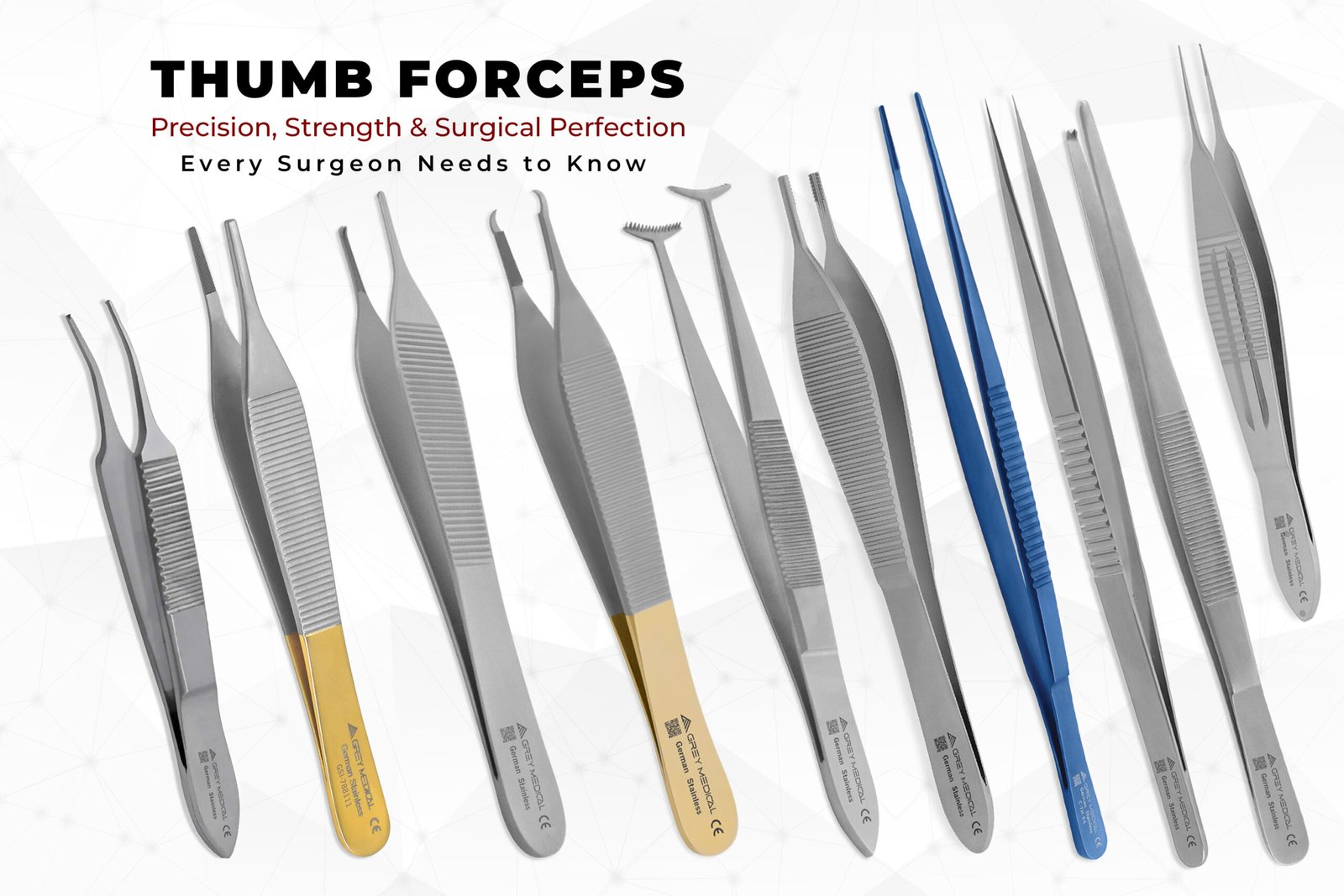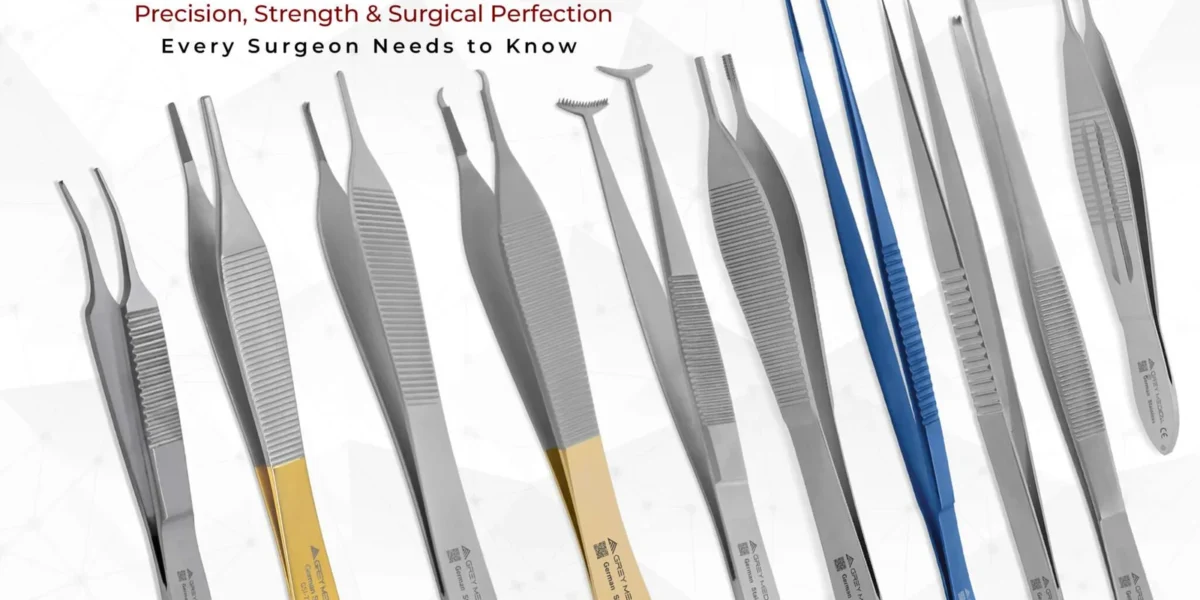Surgical precision is the lifeblood of successful medical procedures, and among the array of tools on a surgeon’s tray, dressing or thumb forceps stand out as indispensable instruments. These tools, though simple in design, play a pivotal role in surgeries across medical disciplines. Whether assisting in wound care or aiding in delicate tissue handling, their significance cannot be overstated.

Understanding Dressing or Thumb Forceps
Dressing or thumb forceps are handheld, tweezer-like instruments primarily used in surgical settings. Designed with a scissor-like spring mechanism, they allow a surgeon or medical practitioner to grasp, hold, and manipulate tissues or materials with precision. Unlike hemostats or clamps, they lack a locking mechanism, offering flexibility and control in handling delicate structures.
Typically crafted from stainless steel for durability and resistance to corrosion, these forceps come in various sizes and designs tailored to specific surgical tasks. Standard dressing forceps feature flat, serrated tips for holding gauze or other materials securely without tearing, while fine-tip variations are ideal for delicate tissue manipulation.
Key Functions in Surgical Procedures
The primary purpose of dressing or thumb forceps is to aid in wound care and dressing changes, but their utility extends far beyond these tasks. For wound management, these forceps reduce the risk of contamination by allowing the practitioner to hold sterile materials without direct contact. They are invaluable when managing open wounds, particularly in applying or removing dressings.
Another significant application is tissue handling during surgical procedures. The precise control offered by thumb forceps prevents unnecessary damage to tissues, which is critical in operations involving fine anatomical structures. Surgeons often use them to stabilize tissues, remove foreign objects, or suturing edges, ensuring minimal injury and optimal healing outcomes.
Types of Dressing or Thumb Forceps
The various types of dressing forceps are designed to suit the specific requirements of surgical tasks. Straight dressing forceps are a staple for holding gauze or removing debris, while curved dressing forceps are ideal for reaching deeper cavities or angled incisions.
Tissue forceps, a category within thumb forceps, are designed with finer tips and ridges for delicate handling of finer tissue layers. These variations cater to microsurgical fields such as ophthalmology, neurology, and plastic surgery, where precision is paramount.
Benefits of Dressing or Thumb Forceps
The versatility of these forceps makes them vital tools in any surgical or medical setting. Their ergonomic design enables a steady grip, reducing hand fatigue for medical practitioners during extended procedures. Furthermore, the use of serrated or smooth tips minimizes tissue trauma, preserving the integrity of the affected area.
Sterility is another essential aspect. Constructed from stainless steel, dressing forceps withstand repeated sterilization, ensuring compliance with strict hygiene protocols in surgical environments. This durability not only ensures patient safety but also reduces the long-term costs for medical institutions.
Maintenance and Care for Longevity
Like any surgical instrument, the effectiveness of dressing or thumb forceps relies heavily on proper maintenance. Routine cleaning and sterilization are vital to prevent contamination and extend the instrument’s lifespan. After each use, forceps should be scrubbed to remove debris, thoroughly rinsed, and sterilized using an autoclave.
Inspecting these tools for wear and tear is equally crucial. Over time, the serrated tips can lose their grip, compromising the performance and safety of the forceps. Regular maintenance ensures that medical practitioners can rely on these instruments for precise and hygienic performance in every procedure.
A Legacy of Precision and Dependability
The importance of dressing or thumb forceps in surgical environments cannot be overstated. From basic wound care to intricate surgeries, these instruments enable medical professionals to perform their tasks efficiently and safely. Their simplicity in design belies the critical role they play in promoting healing and preventing complications.
Whether you are a medical practitioner or a healthcare manager, understanding and prioritizing the use of high-quality dressing forceps is essential. Their contribution to the success of surgical procedures and patient outcomes highlights their enduring value, making them staples of modern medicine.












